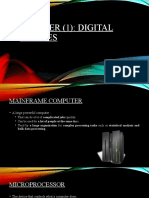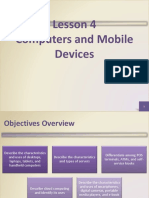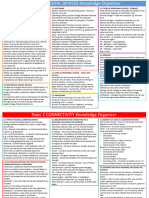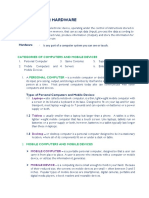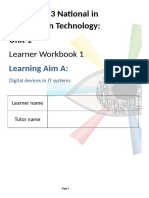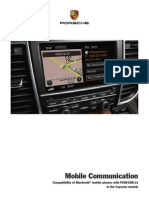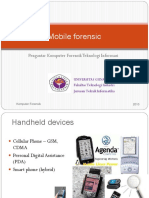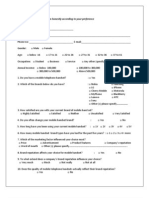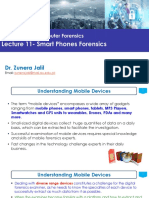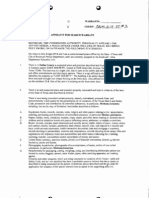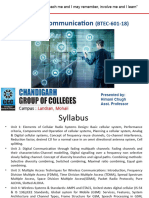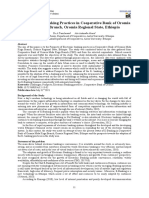0% found this document useful (0 votes)
30 views22 pagesA) Digital Devices, Their Functions and Use
The document discusses various digital devices used in daily life and their functions, including ovens, smartphones, and mainframe computers. It categorizes devices into personal and business use, highlighting multifunctional and standalone computers, as well as mobile devices and servers. Additionally, it touches on the role of cloud services and entertainment systems in managing data and providing connectivity.
Uploaded by
hajhasanzaid16Copyright
© © All Rights Reserved
We take content rights seriously. If you suspect this is your content, claim it here.
Available Formats
Download as PPTX, PDF, TXT or read online on Scribd
0% found this document useful (0 votes)
30 views22 pagesA) Digital Devices, Their Functions and Use
The document discusses various digital devices used in daily life and their functions, including ovens, smartphones, and mainframe computers. It categorizes devices into personal and business use, highlighting multifunctional and standalone computers, as well as mobile devices and servers. Additionally, it touches on the role of cloud services and entertainment systems in managing data and providing connectivity.
Uploaded by
hajhasanzaid16Copyright
© © All Rights Reserved
We take content rights seriously. If you suspect this is your content, claim it here.
Available Formats
Download as PPTX, PDF, TXT or read online on Scribd
/ 22
